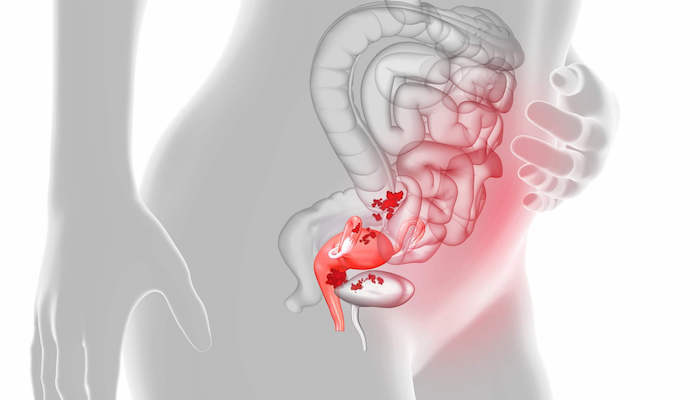
Women with endometriosis naturally seek the help of their gynecologist. But when your symptoms don't improve after conventional medical care and you wonder how long you'll have to live with the pain, it's time to consider treatment options.
As specialists in interventional medicine, we offer highly effective treatments that target the source of your pain: the nerves sending pain messages to your brain.
Read on to learn more about endometriosis, its primary symptoms, and how interventional medicine can help you get relief from your pain.
Endometriosis Explained
The inside of your uterus is lined with a specialized tissue called the endometrium. The endometrium goes through changes every month. It thickens to support a fertilized egg and if you aren’t pregnant, the tissues break down, shed, and bleed during your menstrual period.
Sometimes, cells from the endometrium manage to leave the uterus, get into your abdomen, and grow on other organs. That's when you have endometriosis.
The cells most often attach to the outer walls of your uterus, Fallopian tubes, and ovaries. In some cases, patches of endometriosis grow on the bladder, intestines, or abdominal wall.
Endometriosis responds to the same monthly hormones and changes as the lining of your uterus. As a result, the patches of endometriosis thicken and bleed. The bleeding is trapped in your abdominal cavity, where it causes inflammation, swelling, and scarring.
Six Telltale Symptoms of Endometriosis
Endometriosis is known for causing pain. For many women, the pain is severe. However, it's also possible to have endometriosis and not have any symptoms.
The six telltale symptoms of endometriosis include:
- Chronic pelvic pain
- Pain before and during menstrual periods
- Pain during sexual intercourse
- Pain when relieving yourself
- Heavy menstrual bleeding
- Infertility
It's estimated that 71-87% of women with chronic pelvic pain have endometriosis. Endometriosis is also one of the top causes of infertility. Many women learn they have endometriosis when they can't get pregnant and have a fertility evaluation.
Interventional Treatment for Endometriosis
Interventional medicine includes a variety of treatments that target the nerves sending pain signals to your brain. These treatments use different techniques to prevent specific nerves from transmitting pain signals to your brain. Your pain is significantly reduced when your brain doesn't get the message.
These are two examples of interventional treatments for endometriosis and chronic pelvic pain:
Superior Hypogastric Plexus Block
The superior hypogastric plexus is a bundle of nerves near the bottom of your spine. Pain signals from your pelvic area travel through this nerve plexus.
We use real-time imaging to inject medications at the plexus. We may inject a local anesthetic, medicine that temporarily damages the nerves or steroids. Steroids ease your pain by reducing nerve inflammation.
Local anesthetics block nerve signals for a short time. If an anesthetic successfully eases your pain, we can follow up by wounding the nerve. The wound stops nerve transmission and provides longer-lasting relief.
Spinal Cord Stimulation
Spinal cord stimulation uses mild electrical impulses to block pain signals as they travel through the spinal nerves. We insert lead wires near the spinal nerve roots carrying signals from your lower pelvic area. Then a small pulse generator sends electrical impulses through the wires that block or mask the nerve signals.
Precision Pain Care and Rehabilitation has two convenient locations in Richmond Hill – Queens and New Hyde Park – Long Island. Call the Queens office at (718) 215-1888, or (516) 419-4480 for the Long Island office, to arrange an appointment with our Interventional Pain Management Specialist, Dr. Jeffrey Chacko.













